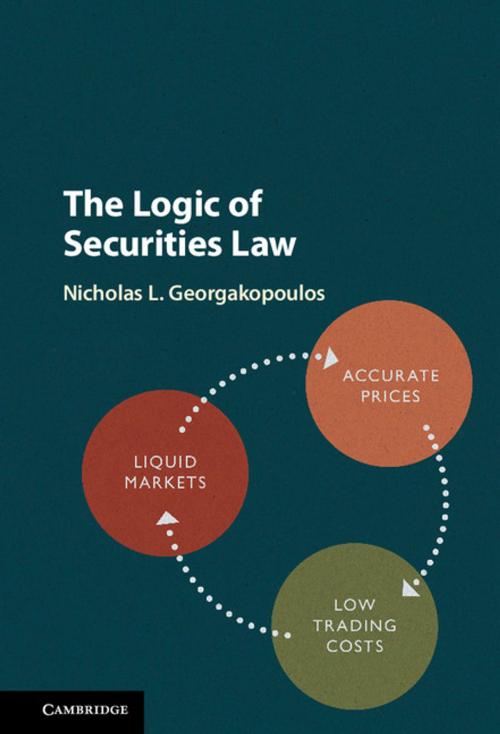The Logic of Securities Law
Nonfiction, Reference & Language, Law, Banking, Business & Finance, Economics| Author: | Nicholas L. Georgakopoulos | ISBN: | 9781108145817 |
| Publisher: | Cambridge University Press | Publication: | May 4, 2017 |
| Imprint: | Cambridge University Press | Language: | English |
| Author: | Nicholas L. Georgakopoulos |
| ISBN: | 9781108145817 |
| Publisher: | Cambridge University Press |
| Publication: | May 4, 2017 |
| Imprint: | Cambridge University Press |
| Language: | English |
This book opens with a simple introduction to financial markets, attempting to understand the action and the players of Wall Street by comparing them to the action and the players of main street. Firstly, it explores the definition of a security by its function, the departure from the buyer beware environment of corporate law and the entrance into the seller disclose environment of securities law. Secondly, it shows that the cost of disclosure rules is justified by their capacity to combat irrationalities, fads, and panics. The third section explains how the structure of class actions is designed to improve deterrence. Next it explores the economic harm from insider trading and how the law fights it. In sum, the book shows how all these parts of securities law serve the virtuous cycle from liquidity to accurate prices and more trading and how the great recession showed that our securities regulation reacted mostly adequately to the crisis.
This book opens with a simple introduction to financial markets, attempting to understand the action and the players of Wall Street by comparing them to the action and the players of main street. Firstly, it explores the definition of a security by its function, the departure from the buyer beware environment of corporate law and the entrance into the seller disclose environment of securities law. Secondly, it shows that the cost of disclosure rules is justified by their capacity to combat irrationalities, fads, and panics. The third section explains how the structure of class actions is designed to improve deterrence. Next it explores the economic harm from insider trading and how the law fights it. In sum, the book shows how all these parts of securities law serve the virtuous cycle from liquidity to accurate prices and more trading and how the great recession showed that our securities regulation reacted mostly adequately to the crisis.















